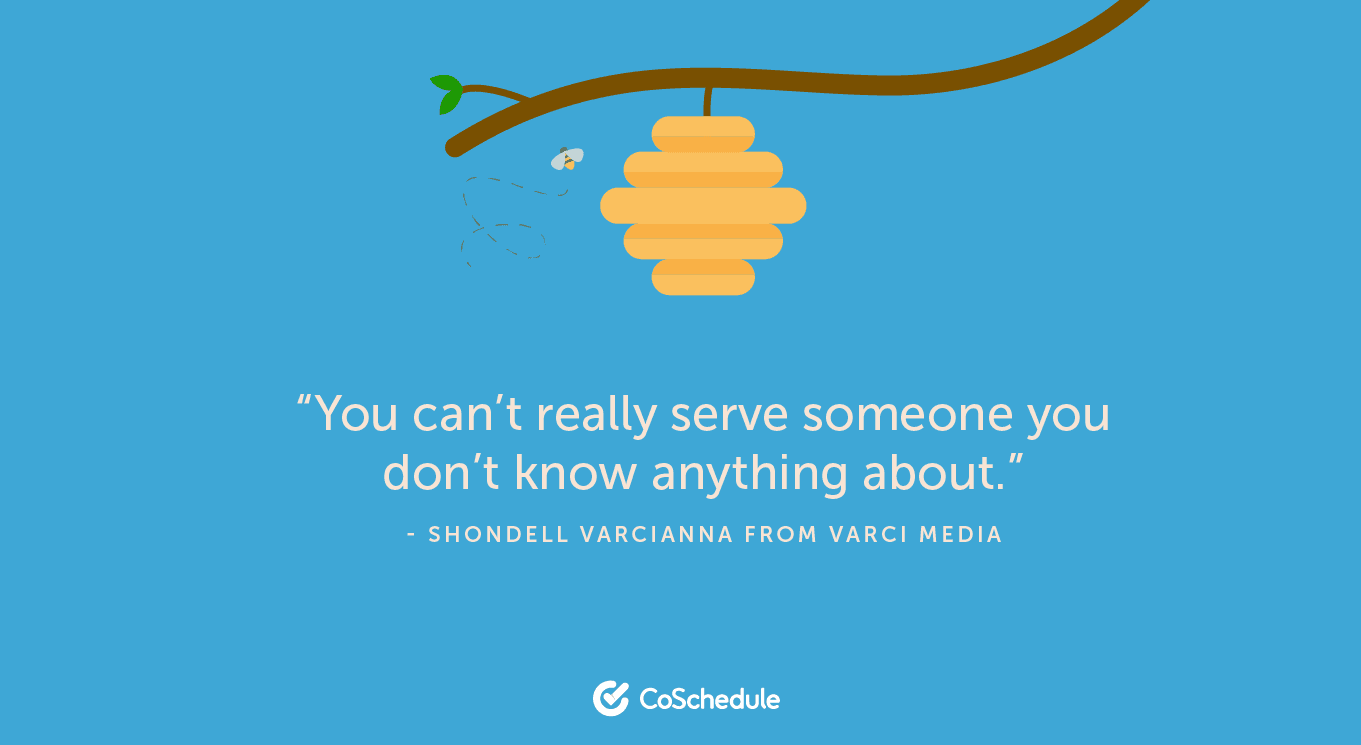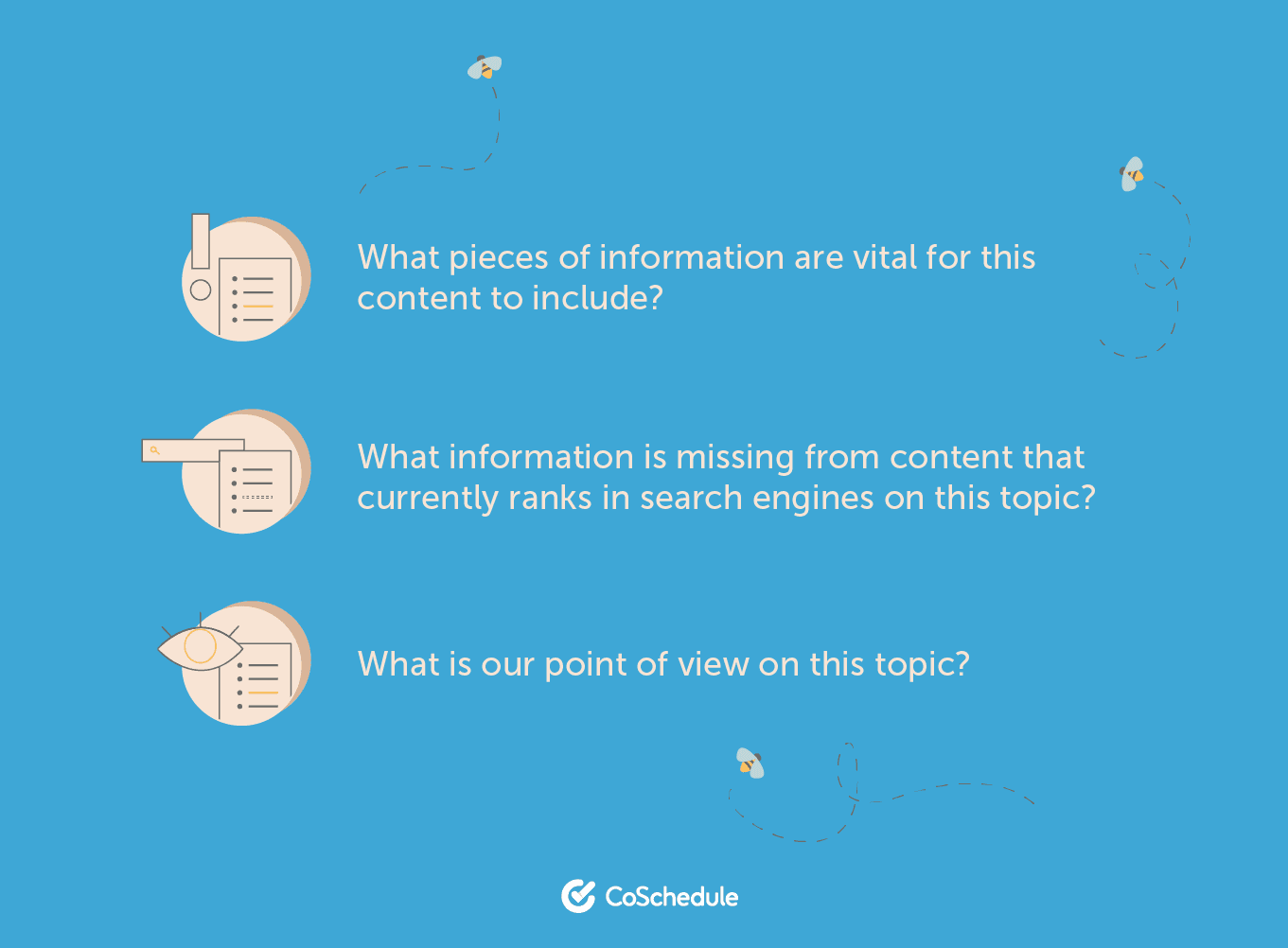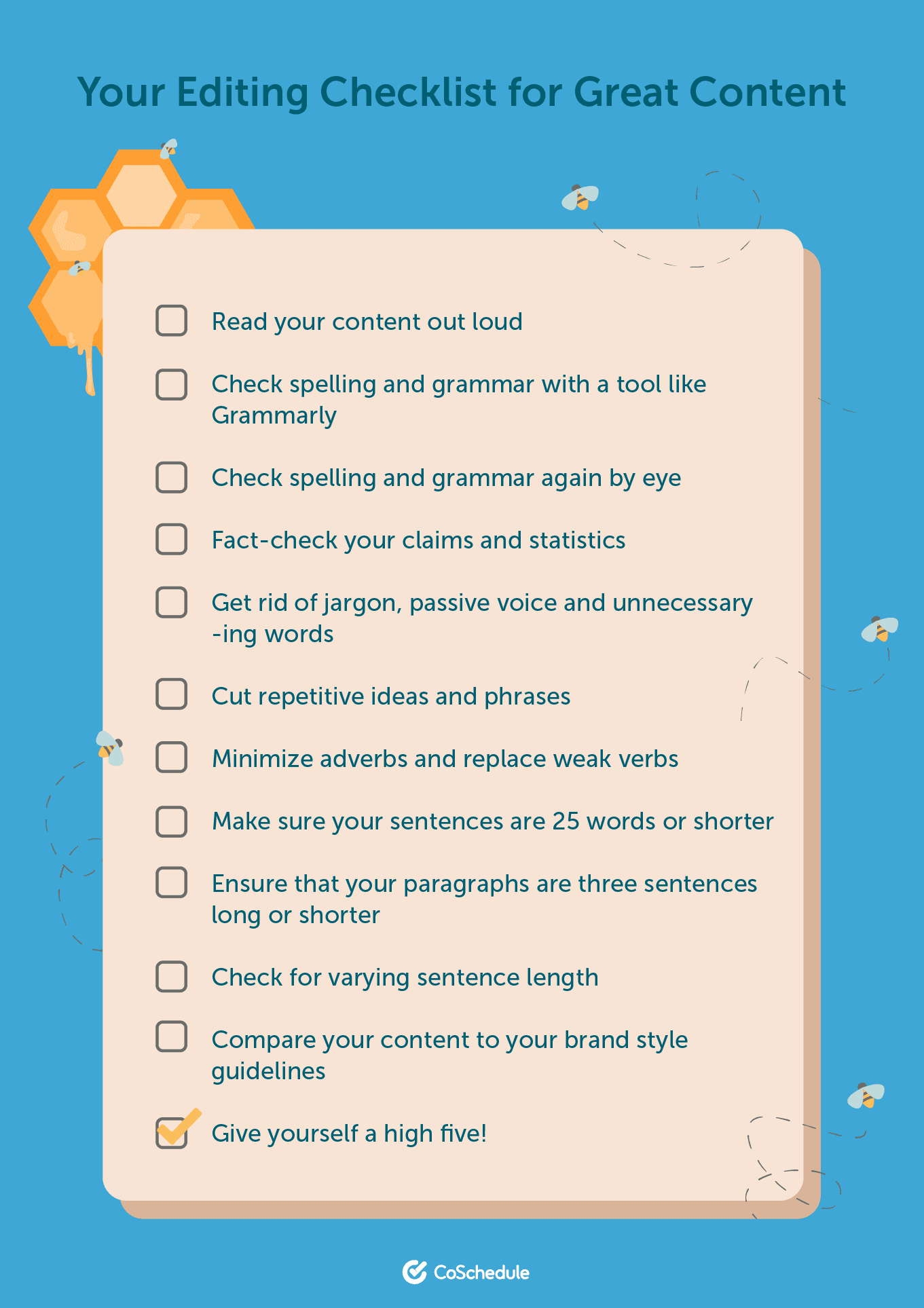What Does Good Content Actually Look Like (And How Can You Create It)?
 Content marketing writers are often told to make “good content.”
But, this advice usually comes from people in their organization who aren’t familiar with marketing. As a result, the writer is left without guidance on what “good content” means.
In many of these situations, the writer ends up interpreting “good content” as “well-written content” — think tight grammar and spelling. Style elements are an important aspect of writing great content, but not the only element. There are more factors to consider if you want content that drives results.
This blog post aims to set the record straight. We’ll settle the question of “what is great content?” to get you on the right track to quality wordsmithing. These standards apply to online marketing content and may need adjustment depending on your industry, content format and audience response.
Content marketing writers are often told to make “good content.”
But, this advice usually comes from people in their organization who aren’t familiar with marketing. As a result, the writer is left without guidance on what “good content” means.
In many of these situations, the writer ends up interpreting “good content” as “well-written content” — think tight grammar and spelling. Style elements are an important aspect of writing great content, but not the only element. There are more factors to consider if you want content that drives results.
This blog post aims to set the record straight. We’ll settle the question of “what is great content?” to get you on the right track to quality wordsmithing. These standards apply to online marketing content and may need adjustment depending on your industry, content format and audience response.
What Does Good Content Actually Look Like (And How Can You Create It)?
Click To TweetUpgrade Your Content With These Templates
Before we talk content, download these two templates to plan your writing and publishing:- Content Marketing Editorial Calendar
- Content Outline Template
The Elements of Good Content
If you could put the criteria for good content into a checklist, what items would you see? Everyone is going to have different standards, but at CoSchedule, we’ve found that content with certain traits performs better than other work:- Research-driven: High-performing CoSchedule content features top-notch keyword and topical research. During SEO planning, we aim for keywords that people actually use by balancing volume and difficulty. Then, we conduct strong topical research informed by that keyword data.
- Original: With our knowledge and research in hand, we strive to deliver original content with a clear angle. We present an evidence-based argument on how marketers should do something or why our take on a topic is true.
- Actionable: Of course, you can’t do what we recommend unless you know how to do it. Our best content instructs the reader on how to perform the tasks we suggest. We thrive on step-by-step explanations and examples.
- Comprehensive: Our analytics show that our best-performing posts cover all the information the reader needs to learn the basics of the skill they highlight. This trend aligns with the Animalz standard of MECE — mutually exclusive and collectively exhaustive. High-quality content includes all of the subject’s necessary information without repeating itself.
A Research Process for Creating Good Content
Now that you understand the elements of great content, we’ll explain how you can integrate those elements into your writing. The process takes four main steps — research, writing, optimization and distribution. Here’s how you can perform research that supports high-quality content.Start by Understanding Your Audience
 Before looking into any other aspect of your content, you should research your audience. They’re the top priority in every stage of the marketing writing process. As Shondell Varcianna from Varci Media put it when we talked to her, “You can’t really serve someone you don’t know anything about.”
These two projects will put you on the track to audience-centered content:
Before looking into any other aspect of your content, you should research your audience. They’re the top priority in every stage of the marketing writing process. As Shondell Varcianna from Varci Media put it when we talked to her, “You can’t really serve someone you don’t know anything about.”
These two projects will put you on the track to audience-centered content:
- Customer research: Always keep up-to-date and extensive customer research on-hand. Databox has tons of suggestions for conducting on-point customer research with minimal resources.
- User/buyer personas: After conducting thorough customer research, create a user/buyer persona that represents your typical customer. Try using our user persona template or HubSpot’s Make My Persona tool.
Find What Your Audience Cares About
Your customer research will help you understand your audience’s interests. Let’s dig a little deeper to see what kind of internet content they truly care about. Try refining your audience’s interests with the following techniques:- Conduct thorough keyword research: When you use keywords correctly, they determine much more than SEO rankings — they also help you find topics that searchers think about. Look for long-tail keywords using keyword research techniques, then use an SEO tool to check their volume and difficulty. Keywords Everywhere is a great budget pick that shows you data right on the term’s search engine results page (SERP).
- Explore online conversations: Social media and community sites are treasure troves for audience insights. Visit the sites and apps that your typical customer uses and see what those communities want to discuss or learn more about.
- Talk to your team and customers: You can also go straight to the source. Ask your sales and support staff what they often see customers asking about to identify opportunities for education or handling objections. Direct interviews with your customers will also provide valuable insights.
Choose the Right Topics
With your audience’s interests narrowed down, you can begin picking topics to cover in your content. The right subjects for marketing content tend to align with:- Your audience’s interests
- Your company’s products and services
- The intersection of your product/services and your audience’s interests
- Top of the funnel (unaware of your product): Audience interest-related topics that draw attention to your brand
- Middle of the funnel (considering your product): Subjects at the intersection of your audience’s interests and your product to encourage buying
- Bottom of the funnel (almost ready to buy your product): Product-centered topics that provide more details and insight
Use a Content Calendar
 We might be a little biased, but we believe that planning your content topics using a calendar will set you up for success. As you use the template we provided, try these strategies for making content organization a snap:
We might be a little biased, but we believe that planning your content topics using a calendar will set you up for success. As you use the template we provided, try these strategies for making content organization a snap:
- Start small: If planning every piece of content seems overwhelming, start with one or two blog posts a month and build up as you get more comfortable.
- Organize by channel: Try color-coding your calendar entries by format (blog post, downloadable content, social media, etc.) for easier organization at a glance.
- Choose a calendar owner: Assign someone on your team as the “calendar owner” who will update and enforce your content schedule.
A Writing Process for Creating Good Content
Onto the writing stage. This second step includes every action needed to build a piece of content from the ground up.Start With Keyword and Topical Research
All great content begins with thorough research. Marketing writing tends to involve two kinds of research — keyword and topical. Keyword research goes beyond search engine optimization — it also helps you identify opportunities to stand out from the competition. Instead of looking for what your competition is talking about, look for what it isn’t. These less-discussed subtopics in your subject will provide more chances to deliver original content and impress your audience. Your options for keyword research tools include:- Google Keyword Planner (free)
- Keywords S--ter (free)
- Keywords Everywhere ($10 for every 100,000 keywords)
- Moz Pro (starting at $79/month)
- Ahrefs (starting at $99/month)
- Semrush (starting at $119/month)
- Conductor (contact for pricing)
All great content begins with thorough research.
Click To TweetDetermine Your Angle on the Topic
Once you have a subject for your content, you aren’t quite done. You’ll need to establish your angle on your subject. As Databox’s Director of Marketing, John Bonini, puts it, we see so much copycat content on the internet because of a lack of angles. Writers are using the same keywords without differentiating themselves through their opinions. It might seem risky to put your take out there when you’re trying to sell something. But, would you rather blend into the rest of the content on your subject or stand out for your opinions? Find your content’s angle by asking these questions: Consider what you think is important or interesting about your topic, and look for ways to answer questions that your competitors haven't.
Consider what you think is important or interesting about your topic, and look for ways to answer questions that your competitors haven't.
Create an Outline
Outlines keep content organized and easy for readers to follow. They also make your job a lot simpler as a writer. Using the outline template we gave you, start with mapping out this fundamental content structure:- Introduction
- Body sections
- Subpoints within each section
- Conclusion
- Cover everything your audience needs to know: If you have an important point to share, make sure you note it in your outline. You don’t have to pad for length, but you should touch on everything you need in your content so you and your writer remember to include it.
- Include relevant sources: Did you find any useful resources while you researched your content? Do you have any links on your website that would contribute to the piece? Mention them in your outline or add them at the end so you know you’ll include them.
- Decide what visual elements you’ll need: If any images or videos come to mind while you’re outlining your content, include image or video direction in your outline. (It’s also okay if you think of more visual elements during or after writing.)

Write the Thing
So, you have your topic, angle and outline set up. Great! Let’s get writing. Online content writing usually follows different best practices than writing for school or work. Some of those standards include:- H2 and H3 subheads: Content management systems and word processing programs have formatting options for “Heading 2” and “Heading 3” that translate into the HTML codes <h2> and <h3>. These codes help search engines understand content and provide easy-to-understand headers to organize your writing.
- Short paragraphs and sentences: Try to keep your sentences under 25 words long and paragraphs under three sentences long. This sentence and paragraph structure will make your content easier to scan and read on mobile devices.
- Use keywords naturally: When you add keywords to your content, make sure they read like a normal sentence instead of feeling “stuffed in.” One trick to achieving this goal is to write your content without thinking about keywords and inserting them afterward in places where they fit.
- Link to relevant content: If you reference an online source, make sure to credit it by linking it. You might also want to incorporate links to other useful content that make sense in their context.
An Optimization Process for Creating Good Content
Your first draft is done. Good job! Time to get it ready for publishing.Scan for Mistakes and Style Errors
 Let’s start with the traditional editing process — looking over your writing for errors and opportunities for improvement. Try implementing these editing tips and tricks:
Let’s start with the traditional editing process — looking over your writing for errors and opportunities for improvement. Try implementing these editing tips and tricks:
- Reading your writing out loud to check its readability
- Cut redundant phrases and ideas
- Minimize jargon, adverbs and passive voice
- Replace weak words with stronger ones
Include Visual Elements
Elements like graphics and photos break up large sections of text and improve content’s visual appeal. The following tools will help you create original images for your content:- A screenshot program like Lightshot: Screenshots work well when you want to show your reader how to do something or showcase an example of something online. There are plenty of screenshot programs on the market, but Lightshot works well when you want to capture only part of a page.
- Graphics creators like Canva and Visme: You don’t have to be a design professional to create your own graphics. Canva has thousands of customizable templates for online graphics. Visme has more limited free features than Canva, but it offers interactive content and infographics.
- Photo editors like Photoshop and Pixlr: Photoshop and its more affordable counterparts enable you to adjust colors, change image sizes, combine images and perform many more editing tasks. If you need a free and lightweight alternative, Pixlr has simplified and advanced versions that work in your browser.
Optimize All Images for Search Engines
Did you know that search engines evaluate images? You’ll want your content’s pictures to follow best practices for you to maximize its visibility and accessibility. Yoast suggests these practices for two of the most important elements of image SEO:- File names: Put the subject of the photo in the file name first, followed by a few important descriptors.
- Alt text: Add alt text to every image that includes a relevant keyword when applicable. Try to follow accessibility best practices by making your alt text as descriptive as possible — your audience members with screen readers will appreciate it.
Write a Quality Title Tag and Meta Description
Every web page has a title tag and meta description that determine how its search result will appear. Think of them as your page’s elevator pitch to search engine users. Here are some of our tips for writing good title tags and meta descriptions:- Keeping the title length between 50 to 60 characters
- Using your primary keyword in the title or meta description
- “Front-loading” your main topic in the title if it originally appears in the last few words

A Distribution Process for Sharing Good Content
Foundation CEO Ross Simmonds, a major figure in content marketing, often stresses the concept of “create once, distribute forever.” What does that saying mean? Once you have a piece of content, you can maximize its return on investment (ROI) through diligent distribution. You can get decent enough results from sharing your content on release, but you’ll see even better metrics when you make distribution a habit. The following practices will boost your content’s visibility and shareability. Remember to keep sharing after publishing time for great content that keeps giving back.Optimize for Search (But Keep It Human)
Despite the internet having more marketing channels every day, search engine optimization (SEO) still drives most online visitors. According to a 2019 BrightEdge report, 68% of web traffic comes from search engines. So, you’ll want to do what you can to optimize your site for search. Fortunately, algorithms are smarter than ever before, so many SEO measures also improve usability and readability. You can follow plenty of strategies to improve your content’s SEO, including the best practices for content writing and optimization we explored earlier. Consider trying these SEO content marketing tactics, too:- Optimize your website for faster loading speeds
- Experiment with long-form content (it typically performs better in search rankings)
- Use appealing and easy-to-understand permalink URLs
- Include your main keyword in the first 100-150 words of an article (while keeping it natural-sounding)
- Link to high-authority sources
Share Every Piece on Social Media
After you upload or hit the “publish” button on your content, make sure to schedule it for regular social media shares. Use strategies like the following to make compelling social media posts based on your content:- Repurpose graphics from your content for social media
- Follow best practices for social media content and scheduling
- Share a mix of high- and low-performing content
Include the Content in Your Email Newsletter
Do you have an email newsletter? Add content tidbits like these to your newsletter rotation:- Links to your newest content
- Selected graphics and quotes from your audience’s favorite content
- “Throwbacks” to older content that needs more traffic
Connect With Your Sources
Let your sources know when your content goes live — you might get some shares. You can approach this strategy in two ways:- Contacting an interviewee: If you interviewed someone, like a subject matter expert, for your content, notify them when you publish it. You already have their contact information, and you’ll have a decent chance of them sharing the content.
- Contacting a link source: This strategy takes a little more effort, but it can also provide a high payoff. If you can find publicly available contact information for the author of an online resource you used, let them know that you used their information and thank them.
Reach Out to Trusted Partners and Colleagues
The people in your professional network who you personally know can be your fiercest advocates. Email or DM connections you trust about your work and tell them it would mean a lot if they shared it. You can also share your content on your professional social media profile to raise awareness.Repurpose Your Content
One of the secrets to generating content consistently is understanding how to repurpose it. You can take the information from one piece of content and rework it for another content format. For example, you can spin off a single blog post into these content types:- Video
- Podcast
- Webinar
- Slidedeck
- Downloadable one-pager
- Infographic
- Social media post


